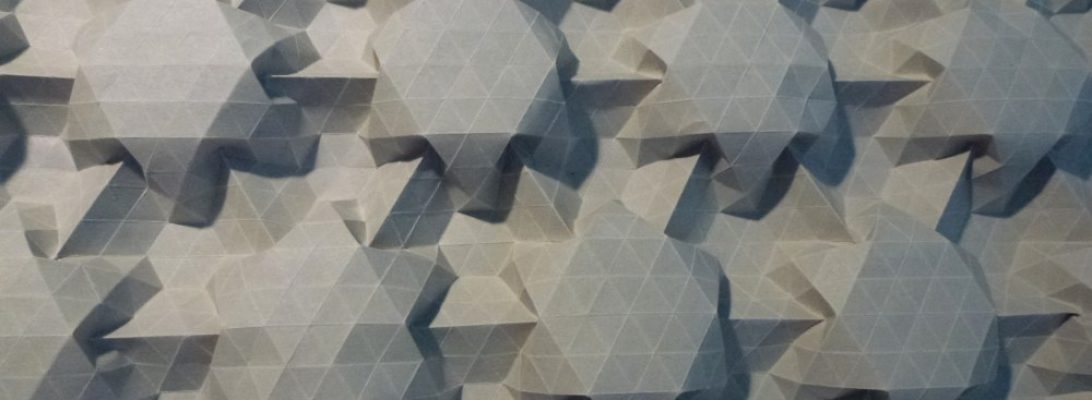It is a wonderful thing when designers share their processes, crease patterns and diagrams. Boice Wong is one that readily shares the CPs of his amazing designs, and when I saw “Sword and Shield V2”, I knew I had to give it a go:

Although I have been folding for decades, most of what i have folded has been from DIAGRAMS (step by step folding guides). By far the MAJORITY of origami out there does not exist as diagrams, but a larger proportion exist as CPs (crease patterns). I have been, over the last few years, working on my crease pattern solving skills.

This model is based on Boice’s 24 grid CP, and the collapse is relatively straight forward. Sometimes CPs give you crease orientations (red=mountain, blue=valley), sometimes not. The skill comes with deciding which creases to impose first as part of the collapse. Sometimes it does not matter, most it does, some you can derive based on “knock on effects” on one crease that causes the orientation of a sequence of subsequent creases. Sometimes it is pure witchcraft.

I got to the “base” fairly easily, as it had structures I recognised from other models, but then the shaping really stumped me. I always assume (unless I am able to determine otherwise) that a model is fully 3D, it has a front and back both of which are presentable. So I set about trying to make the back closed and tidy and the proportions correct – failing and fully mashing a couple of maquettes in the process.
The internet is an amazing thing, I reached out to Boice on Discord and got some very helpful advice on how “stick figurey” the back was and presto, the model worked. I must have another go, with some bigger paper, and see if I cannot make it a bit more “all round”. I went to present a pair of them dueling and realised that if they both had swords in the same hand then I could not get them to face each other without one of them exposing his back. A simple fix was to mirror the CP and collapse it so the model held the sworn and shield in opposite hands to the existing opponent.

There is LOTS of paper for the shaping for the front of these models, so if it is thin and larger you could go nuts with armor details. At this scale and thickness (I chose 70gsm Kraft, 30cm squares) it was tough working the layers, but I am happy with the result.
I tried to differentiate the 2 swordsmen, one fancy (with pointy jointed shoes) and the other plain, and tried to give some dynamism to the posing, tough at this scale. In the end I like my little swordy chaps. You will notice they both have different armor, swords and shields. Such a clever design and one I must come back to someday.

